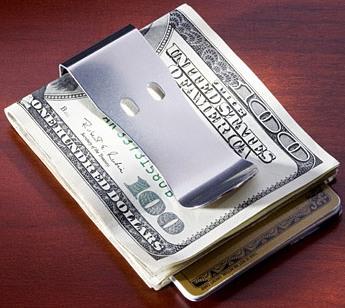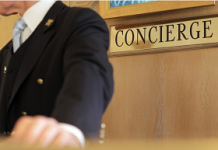Determining a standard room rate is one of the challenging and tough jobs for hotel as designated room rate must be capable of generating revenue and compensate other costs of the hotel, such as administrative costs, overhead, and utility costs.
Room rate could be typically defined as the price or cost that is charged by the hotel or lodging industry for overnight lodging. Usually, the front office department and the sales and marketing department are responsible for ensuring effective room rate according to several market-sensitive aspects. The market sensitive factors basically include:
- Expected sale rooms.
- Expenses to beat market competition.
- Hotel operations.
- Tax investment opportunities.
- Price sensitivity.
- Marketing and sales endeavor.
A hotel generally assigns a standard rate for each room category which is termed as the rack rate (a retail rate of guest room). Despite of its high charge; rack rate does not always ensure profit for the hotel. Rack rate for room could be varied due to the other room rate schedules along with room types, pattern, and designation.
Types of Hotel Room Rates
Beside standard rack rate, other room rates are approached or developed in hotel based on certain factors (ex-particular season of room sale, prospective sales of room etc.) with a view to rule in the geographical market.
There are some other common room rates categories which are as follows:
 Commercial rates: Commercial room rates are given to the business representative of a particular company. These business people are not the frequent guests and occasionally stay in the hotel. These business people often require a special rate as they can generate revenue through their group traveling. In most of the large hotels, frequent guests are awarded with the free room night after staying some consecutive days.
Commercial rates: Commercial room rates are given to the business representative of a particular company. These business people are not the frequent guests and occasionally stay in the hotel. These business people often require a special rate as they can generate revenue through their group traveling. In most of the large hotels, frequent guests are awarded with the free room night after staying some consecutive days.- Government rate: A discount or special rate which is negotiated with government organization for their foreign visitors and traveling official staffs. The federal or state government body developed predetermined rates for their traveling officials to pay back their traveling costs. This reimburses process or the pay back procedure is referred as per diem.
- Corporate rates: Corporate rates are offered to existing business guests of the hotel. Generally two types of business guests stay in the hotel, such as, frequent guests who often visit or stay in the hotel and corporate guests who have given a constant rate.
- Frequent traveler rate: Hotel developed frequent traveler program to offer frequent traveler rate to those who frequently visit the hotel due to repetitive business.
- Military and educational rate: As the name suggests military and educational room rates are specially developed for military personnel and educators. These groups are considered as valuable source of revenue maximization and potential room sales due to their frequent traveling. Special rates are approached to them due to their limited travel expense.
- Family rates: Special room rates are offered at particular season with a view to attract family with their children. The room rates of children are often deducted when family rates are approached.
- Membership rates: Hotel offer membership rate (fifty percent of the rack rate) in order to attract the potential members of large organizations like (AAA) or (AARP).
- Group rates: Group rates are developed for a large number of groups. In this case, the travel agent works as a negotiator between the front office and the group.
- Industry rates: A negotiated special rate for the officials or staffs of the travel industry, for example: travel agents, hoteliers of other hotels etc. are often extended the professional courtesy of discounted rates.
- Half-day rate: Half-day rate room rate is calculated based on duration of guest stay. It is basically developed for those travelers who book room for half day or less. For example, corporate guests often book room for short period of time for business purposes.
- Complimentary rate: Complimentary rates are preserved for the special guests (ex-personnel or member) as fringe benefit. Front office department also could provide complimentary rates to tour directors or tour organizer to establish long term relationship.
- Airline contact rate: Hotel offer discount rate to the airlines crews to generate high volume of business.
- Travel writer rate: It is the special rate for the travel writer to appreciate them to write quality and resourceful article about the hotel features.
- Advance purchase rates: Advance purchase rate is the discount rate which is offered according to the number of days of advance booking to encourage the traveler for advance booking.
- Package rates: Package room rates include goods and services with reasonable room rate during low sales periods. Such packages are often advertised and promoted in order to attract guests.
Package rate could be different types. Such as:
- American plan: American plan comprises of meal (ex- breakfast and the evening meal) with lucrative room rate. Some resorts offer customized American plan including one meal with the price of a room.
- Meeting packages: This package includes coffee breaks, meals, audiovisual equipment with the cost of the meeting room and a sleeping room.
- The Continental Plan (CP): Continental plan comprises of continental breakfast and cost of the room.
- The All Suite Plan (SP): A comparatively new package rate which includes breakfast and cocktails in the evening with room rate.
- Vacation packages: These may combine airline tickets, transportation, local amenities with cost of the room.
- Honeymoon package: A honeymoon package comprises of complimentary champagne, a cheese-and-cracker basket, flowers, and a complimentary breakfast.
- Other packages rates: some other packages are A “Night on the Town” package (limousine ride and dinner), shopping packages (discount coupons to local shops with foot massage), a concert package (ticket to a show and the compact music disk.)
- European plan: Though European meal is often mistaken as the package but In European plan, meals are separately charged from room rates.
Establishment of Room Rate
Room rates are basically established as part of the reservation process. Thus, the front office personnel must be skilled in assigning a special room rate during the registration process. Minimization and maximization of room rate depends respectively on the cost structure of the hotel and other competitive prices. The front office manager must consult with the hotel owners, general manager, and other department heads in case of maximization or minimization of competitor’s room rate.
Even, in some special cases the front office manager or personnel is permissible to minimize the room rate then its standard rate. Front office department usually uses certain methods for establishing the room rate. Such as:
- Rule-of-Thumb Method: Under this method room rate rates will be charged $1 for every $1,000 of construction and furnishing costs. Suppose, a new hotel has established where $ 30,000 construction cost has incurred, then under this method room rate will be $30. However, this method is now less applicable comparing to other methods.
- Hubbart’s Formula Method: Under this method, room rates are established based on certain factors. For example: operating expenses, revenue generated from other departments of hotel, expected return on investment etc. This method is very effective in determining average room rate. Hubbart’s formula method depends on the front office to provide revenue to pay off operating expenses, overhead, and return on investment.
To determine the room rate, Hubbart’s formula method basically applies the following steps:
- Figure out the expected profit, multiply the expected rate of return on investment with the total invest of the owner.
- Determine the pretax profit, divide expected profit by 1 and deduct from the tax rate of the hotel.
- Figure out the fixed charges (ex- interest expense, depreciation, insurance, taxes of property, mortgage etc.) and management fees by subtracting from the pretax profit.
- Determine operating expenses that are undistributed (ex- data processing, guesstimate administrative and general, human resource, marketing, accounting, utility etc) by subtracting from the fixed charges.
- Figure out income or loss which is derived from other revenue generated outlets, such as business center, food and beverage centers, telephone center and so on. And add this amount to the undistributed operated expense.
- Add the amounts arrived at step 2, 3, 4 and other operated losses and then deduct it from the amount arrived at step 5, to determine the income from required room department.
- Calculate the room department revenues by adding the required room department income, direct expenses of payroll and other expenses from room department and other direct expenses.
- Divide the amount arrived at step 7 by the estimated number of rooms to be sold, to determine the average room rate.
- Market Tolerance: Market tolerance method is considered as the most time-consuming methods in establishing a hotel’s average daily room rate. But, this method is established by estimating the competitive set (monitor the competitive price of same product) rather than scientifically approached. Management approaches this competitive set by considering the following areas:
- Compare the room rate with other competitive rate.
- Ensure more return on investment comparing to other hotels.
- Determine the occupancy percentage of both own and other comparable industries.
- Consider the emerged trend analysis of comparable industries.
- Compare maximization and minimization of room rate of other hotel industries in the market.
However, these methods for establishing room rate are not standard procedure or mandatory for each hotel. Room rate must be applied in way that it can ensure expected rate of investment by the hotel or the hotel owner. Room rate of each category should be considered and approached according to the current demand of the market.
The responsible personnel must communicate with general manager to ensure the effectiveness of room rates with regard to profit and loss of hotel and be aware of competing room rates to achieve competitive advantage.
Maximization of Hotel Room Rate
Front office personnel has very vital role in maximizing the room rate. To maximize the room rate a front desk agent can perform the following steps:
- Having details information of room rate of each category including ranges of room rate, room furnishings, special features, and arrangement are essential to maximize room rates.
- Present room rates with lucrative and attractive features of the product.
- Properly trained in specifying and handling guest’s needs often work as effective tool to maximize room rate.
- Hiring skilled employees with proper knowledge, education, and attitude and providing an incentive program for them is beneficial in maximizing room rates.
Training Video
Click Here to Watch our Free Video on Classification of Hotel Rack, Commercial, Corporate Room Rates

















THE INFORMATION I GOT WAS USEFUL AND IS TO UNDERSTAND
Thanks
i like it very much trert
like
thanxx……